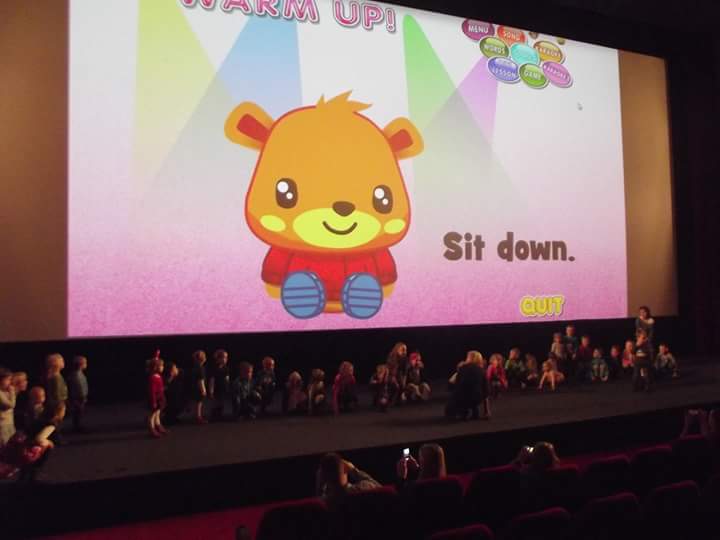Quite a few of you seemed impressed with the Instragram video I put up the other day and in particular the amount of students in the “class”
Obviously these days my job is helping teachers so I don’t get to teach kids as often as I’d like ( kids are way easier to teach 🙂 ) and this video is quite a few years old so I’ve also hopefully improved since then, so I thought I’d share a few of tips and tricks so you too can have a try at much bigger classes. After all the more students you can teach the more students we can save from the “learning should be boring” teaching systems! 🙂
* Make sure you’ve got the discipline in place
We don’t just jump into a song like this and certainly when it comes to the pair work/group games then we definitely have to make sure the discipline and knowing why we are learning is there. Here are my top tricks for discipline and if you want to see how I do this with a kids class it’s here. Again this one is a little old so hopefully I’ve improved since then 🙂
Ninja Tip: If you’re on a Mac or PC Youtube should show you the subtitles. And yes, feel safe that you made the right choice to use the kids’ native language to set up the discipline and expectations. If you don’t speak their language yet, learn it, you’re a language teacher after all :), it only takes a few months and will be the biggest investment you’ll make in your quality of life. And if your boss bans you from using the local language then of course change the job or even better start your own school, again nothing will be better for your quality of life 🙂
As you can see, these fundamentals are the same for one student or 1000, adults or kids.
And of course the first time I did this I was rubbish. It only got this smooth through lots and lots of practice 🙂
* Have staff for younger kids
If you notice in the top video there are plenty of staff there too, usually it’s around one adult staff member for every 30 kids. For younger kids you definitely need this! For older kids and adults hopefully not so much but it’s always good to have a few staff in case of accidents – which do happen – or things going wrong.
*Sound & Pictures
Nothing brings together a group of people like music, just look at any local festival or big rock concert. So make sure the speakers are big so that they sound clear without being too loud.
Ninja Tip: Loud but not too loud is important, especially if you’re doing this with kids then remember their hearing is still developing and you definitely don’t want to damage it!
Similarly humans need a visual focus too, so having the big screen with the visuals really helps. For even larger groups I have two screens, one on each side of the stage. Or sometimes I’m lucky enough to have a crazy big screen 🙂

And some teachers even hire out cinema screens for their big Genki English classes -check out Kamila’s kids’ event:


* The content i.e. don’t do flashcards (they can’t be seen at the back!) 🙂
I spent years teaching hundreds or thousands of students at once and during that time I was refining and developing the Genki English curriculum. At the same time I was also working with some of the least affluent schools in the world. And one thing they had in common was the need for “no prep” output games i.e. games and activities you can do with any number of students without needing to print out worksheets, mini cards etc. You can imagine what a logistical nightmare it could be for 1000 people groups or indeed how much extra it costs for schools who operate on very few rupees or baht.
It can be great fun doing high prep games like the Star Wars game but for every lesson in the curriculum the first game I recommend is always a no-prep game so it can be used in any school in the world with any class size. Plus it’s also great for lazy teachers like myself who don’t like carrying round big piles of flashcards 🙂
So with a little practice you can do just about the whole Genki English curriculum with this size class if you like. 🙂
* But in my ….
The biggest reason to not do big classes is the “but in my …..” philosophy so be careful to not fall into the trap of “Oh, but these kids are in …. country, so it won’t work in mine.” or “Oh, but these are kids so it won’t work for my adults” or “But my classes are smaller so it won’t work for my small class” or “Oh, but Richard is from …. so it won’t work for me” etc. It is a human reaction to have, after all it keeps us safe from not trying anything new, but a much better philosophy to have is
“What can I learn from this?” and “What can I apply in my classes?”
That could be something small like adding in one new student each year. Or volunteering at a local orphanage for a group class or even putting away the textbook for one lesson. Just take one new step each day and it’s amazing where it will lead.
And of course all of this comes down to …
* Confidence 🙂
Confidence comes with practice. I can quite happily walk into a room of 1,000+ people because I’ve done it so many times.
Now someone like Anthony Robbins teaches 10,000 people at once. Could I do that? Sure 🙂 I’d learn everything I could about what might be different, I’d set my goals, I’d walk through it the night before and I’d give it 100%. And there’s a fair chance that it would be terrible! There would be chaos and things going wrong all over the place. But I’d have tried. And the next time I’d get better and better and better.
So give it a go, from what you’ve learnt on this page, what are you going to put into practice today?
Be genki,
Richard


